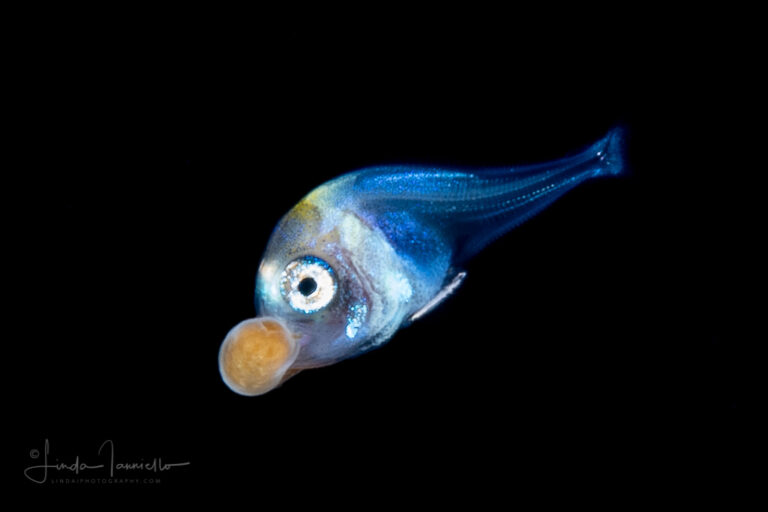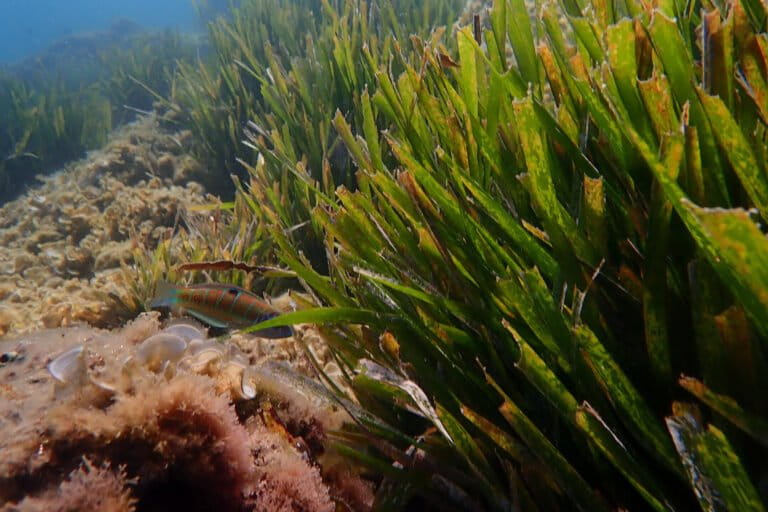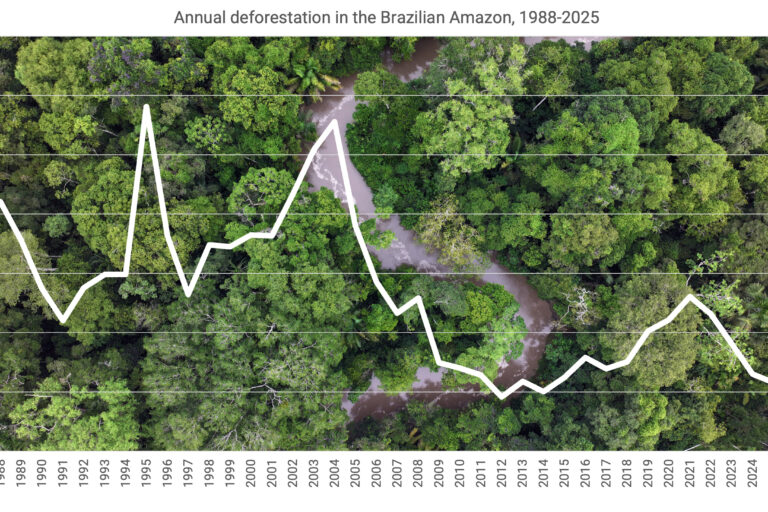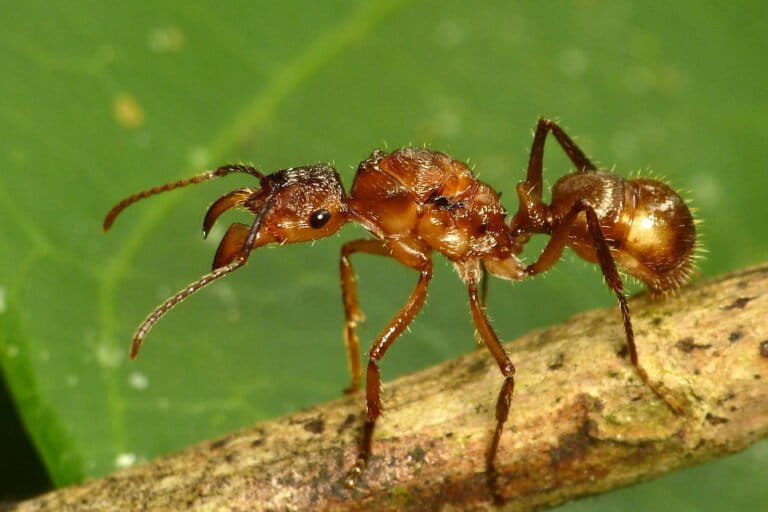- Brazilian scientists have developed biofertilizers with nitrogen-fixing microorganisms to replace the use of chemical fertilizers in the production of soybeans.
- Since the country highly depends on imports of fertilizers, the substitution has had a huge economic impact on the soybeans industry.
- Bio inputs are also more sustainable since they don’t require large amounts of energy for production, don’t pollute and are healthier for farmers and consumers.
- Pricing and supply constraints of chemical fertilizers due to the war in Ukraine are pushing for more R&D on microorganisms targeting different crops other than soybeans.
Brazilian soybean producers have been highly successful in using genome technology to benefit their crops, with huge economic and environmental gains, a new paper highlights. Currently, the growers are using biofertilizer on 80% of their crops and their benefits are pushing scientists to develop new bioproducts for other crops as well.
Scientists in Brazil have developed a sort of “biological yogurt,” as the researcher Rafael de Souza calls it, a biological fertilizer that uses microorganisms instead of chemicals to help soybean crops grow stronger and healthier, in a cheaper and more sustainable way.
De Souza, a researcher from the State University of Campinas at the Genomics for Climate Change Research Center, has co-authored a recent study selecting 14 success stories that demonstrate the crucial role of microbiome research in agrifood systems.
Despite the stories featured, the study of microbiomes — the community of fungi, bacteria and other microorganisms that live in any given habitat — is fairly new and its benefits are still mostly unknown today, emphasizes de Souza, who is also the co-founder and CEO of Symbiomics, a startup that focuses on enabling sustainable agricultural production through biological products.
In Brazil, where soybean farming began, microbiome research has long been under way, but recent advancements in genetic sequencing and easier accessibility to genetic tools have revolutionized the field.
The successful case of Brazilian soybeans is one of the most relevant in the world, de Souza says. “But it is important to know that there is a sea of microorganisms with the potential to increase productivity in a sustainable way. It will replace many of the [agricultural] practices that we see today that are harmful to the environment,” de Souza tells Mongabay.
Microorganisms with big benefits
Soybeans didn’t originate in Brazil. Brought from China, they were first introduced in the country in the 1930s, but commercial production started only in the 1950s, which ignited the start of intensive research on the crop to find better ways to adapt the produce to local climate conditions.
It gave results. Brazil today is the largest soybean producer in the world, with 127 million metric tons of soybeans in 2021-22, ahead of the United States, with 121 million, according to data from the U.S. Department of Agriculture.

Since nitrogen is a key element for plant growth and yield levels, it is widely used in agriculture. However, overuse and continued reliance on nitrogen fertilizers drive up crop production costs and accelerate environmental damage.
But after 70 years of research on soybeans in the country, scientists discovered a way to use diazotrophic bacteria, microorganisms that convert nitrogen from the atmosphere into ammonia through a process known as “biological nitrogen fixation” and are more efficient than chemicals at helping crops fix the gas. This process not only reduces costs but also limits the amount of pollution and greenhouse gas (GHG) emissions.
Mariangela Hungria, soil microbiologist and researcher at Embrapa Soja, the soybean division of Brazil’s agricultural research corporation, believes that the biofertilizers’s success with Brazilian soybeans is in a way the consequence of the country’s poverty. According to Hungria, having to import key chemical fertilizers in high amounts and paying for it mostly in dollars has made the government realize it was more efficient to invest in research to develop a national solution.
“Today, Brazil is the largest producer and exporter of soybeans in the world, and this is only possible due to the use of biofertilizers because nitrogen is extremely expensive. Today we import 90% of the nitrogen that we use in agriculture, so it [soybean production] would be totally unfeasible economically,” she tells Mongabay.
Brazil’s use of chemical fertilizers is highly vulnerable to currency fluctuations since the country imports 85% of all fertilizers needed for every crop it produces. In the case of soybeans, Embrapa estimates that, by using microorganisms instead of chemical fertilizers on 80% of the planted area, Brazilian producers have saved a total of about $37.4 billion in 2021-22.
Microbiomes also bring environmental benefits. Producing urea, the most widely used nitrogen fertilizer, is energy intensive and requires fossil fuels. The study shows that in the 2019-20 crop season, Brazil would have needed around 43 million tons of urea to sustain soybean plantations without biological nitrogen fixation. Using the assumption that each kilogram of nitrogen fertilizer corresponds to nearly 10 kilograms (22 pounds) of CO2 equivalent GHG emissions, the researchers calculated that nearly 430 million tons of CO2 equivalent would be released each year if Brazil were not using microbes to fix nitrogen for soybeans.
A more resilient agriculture
Geopolitics is also affecting the country’s agricultural production, causing supply shortages. Brazil imports a major part of its chemical fertilizers from China, Russia and Ukraine. President Jair Bolsonaro met with Putin one week before the Russian invasion of Ukraine to secure almost a quarter of its fertilizer imports. The war, however, has created a “gold rush,” de Souza says, putting pressure on researchers to develop other biological products for agriculture, including fertilizers for other crops or biopesticides, the latter containing microorganisms that help control pests.

Small-scale farmers are also being educated on the benefits of using biological alternatives to chemical inputs, says Fernando Tinoco, technical coordinator of Emater-MG, a public company focused on providing technical assistance to rural producers in the state of Minas Gerais. He says that small farmers are reluctant to use bioproducts such as bacteria, fungi, viruses, insects or natural extracts to promote plant development or protection against pests.
“Most of them are unaware of these bio inputs. The greatest resistance is due to the lack of knowledge, not knowing how to work with these microorganisms,” he tells Mongabay, just before his visit to a farm to provide training on biofertilizers.
Tinoco highlights that the use of microorganisms benefits the health of both rural producers and consumers. By avoiding the use of chemical fertilizers or pesticides, it also facilitates certifying crops as organic.
The boom in biofertilizers and biopesticides use (a 33% growth from 2020 to 2021, according to CropLife data published by Embrapa) led the Brazilian government to further encourage them. In 2020, it launched the decree 10375/2020, currently pending approval in Congress, to create the National Plan of Bio Inputs. “With this, even the Brazilian government is stimulating production through funding,” says Hungria, from Embrapa, adding that the growth in bioproducts use in the country is much bigger than that of chemical ones.
New studies of microbiomes are focusing not only on agricultural products but also on conservation efforts. The scientific publication Nature Microbiology has recently published a paper advocating “for the conservation and restoration of soil microbial life, as well as active incorporation of microbial biodiversity into managed food and forest landscapes,” as the authors highlight the key roles that microbiomes play for flora, fauna and ecosystems in general.
Despite the increased use of microorganisms for soybeans, the country still lacks investments in research and development of new products focused on other crops, according to de Souza. He says that most stores selling agricultural products in Brazil carry the same nitrogen-fixing biofertilizer for soybeans. “The biological sector is the fastest growing within agriculture. Specifically, here in Latin America, it stands out from the rest of the world. But investment doesn’t keep up. It is as if the market demands biological products, it demands solutions, but there is no innovation, everyone is selling the same thing,” de Souza says. According to him, Brazil needs a bigger focus on research and development to adapt its soybean lessons and knowledge to other crops and microorganisms.
Banner image: The successful use of microorganisms in the production of soybeans is driving R&D for the development of bioproducts focused on different crops. Image by Bruno Kelly/Greenpeace.
Citations:
Olmo R, Wetzels SU, Armanhi JSL, Arruda P, Berg G, Cernava T, Cotter PD, Araujo SC, de Souza RSC, Ferrocino I, Frisvad JC, Georgalaki M, Hansen HH, Kazou M, Kiran GS, Kostic T, Krauss-Etschmann S, Kriaa A, Lange L, Maguin E, Mitter B, Nielsen MO, Olivares M, Quijada NM, Romaní-Pérez M, Sanz Y, Schloter M, Schmitt-Kopplin P, Seaton SC, Selvin J, Sessitsch A, Wang M, Zwirzitz B, Selberherr E and Wagner M (2022). Microbiome Research as an Effective Driver of Success Stories in Agrifood Systems – A Selection of Case Studies. Front. Microbiol. 13:834622. doi: 10.3389/fmicb.2022.834622
Imran A, Hakim S, Tariq M, Nawaz MS, Laraib I, Gulzar U, Hanif MK, Siddique MJ, Hayat M, Fraz A and Ahmad M (2021). Diazotrophs for Lowering Nitrogen Pollution Crises: Looking Deep Into the Roots. Front. Microbiol. 12:637815. doi: 10.3389/fmicb.2021.637815
Meyer, M. C., Bueno, A. F., Mazaro, S. M., & Da Silva, J. C. (2022). Bioinsumos na cultura da soja. Brasília, Brazil: Embrapa.
Averill, C., Anthony, M. A., Baldrian, P., Finkbeiner, F., Van den Hoogen, J., Kiers, T., … Crowther, T. W. (2022). Defending earth’s terrestrial microbiome. Nature Microbiology. doi:10.1038/s41564-022-01228-3
Beef is still coming from protected areas in the Amazon, study shows














